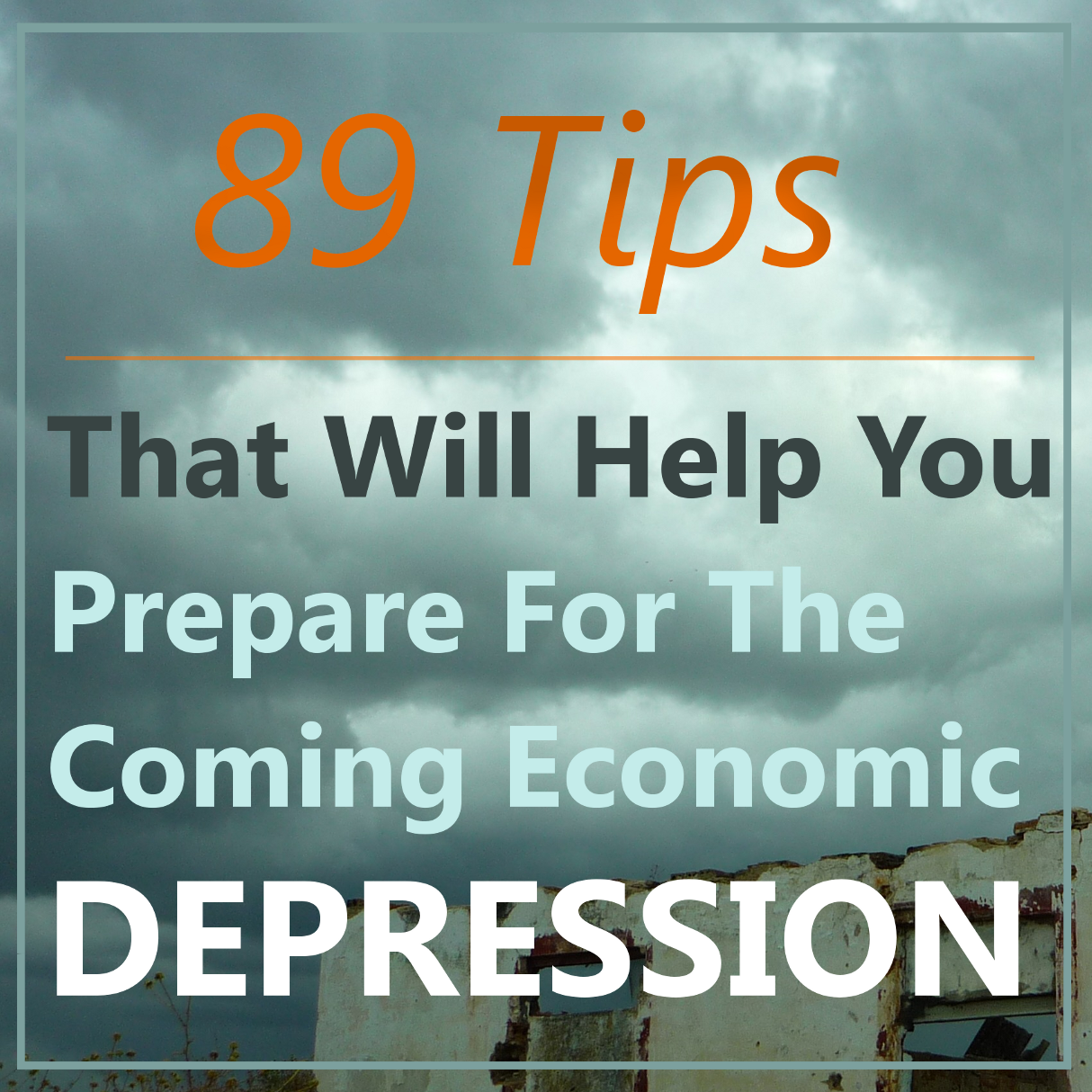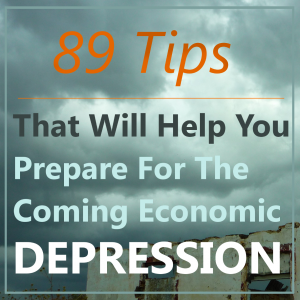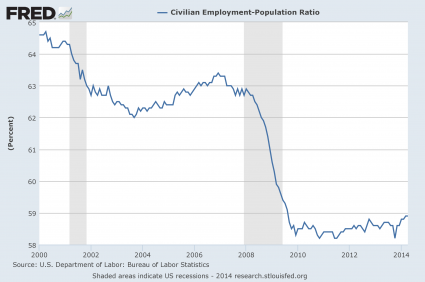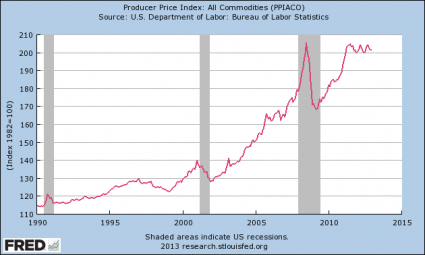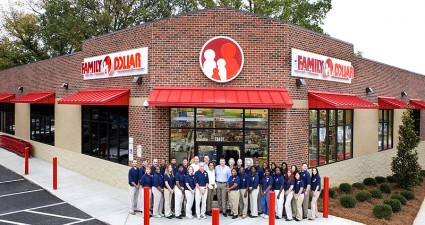 The federal income tax is a bad joke and it needs to be abolished. All over the nation, hard working American families are being absolutely crushed by oppressive levels of taxation, and our politicians are constantly coming up with new ways to extract money from all of us every single year. Meanwhile, many ultra-wealthy Americans and many of the most profitable corporations in the country pay little to nothing in taxes. In fact, as you will see below, there are dozens of very prominent corporations that make billions of dollars in profits and yet don’t pay a dime in taxes. Tax avoidance has become a multi-billion dollar industry in the United States. Those that have the resources to “play the game” use shell companies, offshore tax havens and the thousands of loopholes in our tax code to minimize their tax burdens as much as possible. Meanwhile, the rest of us get absolutely hammered. This is fundamentally unfair. The federal income tax system is irreversibly broken at this point, and it is time to abolish it. If you think that the federal income tax system can be “fixed”, then you probably have never studied it. Our tax code is nearly 4 million words long and it is absolutely riddled with thousands of loopholes that favor big corporations and the ultra-wealthy. We should come up with a better, fairer way to fund the government. The United States once prospered greatly without a federal income tax, and it could do so again.
The federal income tax is a bad joke and it needs to be abolished. All over the nation, hard working American families are being absolutely crushed by oppressive levels of taxation, and our politicians are constantly coming up with new ways to extract money from all of us every single year. Meanwhile, many ultra-wealthy Americans and many of the most profitable corporations in the country pay little to nothing in taxes. In fact, as you will see below, there are dozens of very prominent corporations that make billions of dollars in profits and yet don’t pay a dime in taxes. Tax avoidance has become a multi-billion dollar industry in the United States. Those that have the resources to “play the game” use shell companies, offshore tax havens and the thousands of loopholes in our tax code to minimize their tax burdens as much as possible. Meanwhile, the rest of us get absolutely hammered. This is fundamentally unfair. The federal income tax system is irreversibly broken at this point, and it is time to abolish it. If you think that the federal income tax system can be “fixed”, then you probably have never studied it. Our tax code is nearly 4 million words long and it is absolutely riddled with thousands of loopholes that favor big corporations and the ultra-wealthy. We should come up with a better, fairer way to fund the government. The United States once prospered greatly without a federal income tax, and it could do so again.
Many people simply do not believe that it is possible for corporations inside the United States to make billions of dollars in profits each year and not pay a dime in income taxes.
Well, according to a report put out by Public Campaign, that is exactly what is happening. Posted below are numbers that come directly from their report. 30 large corporations are listed, and 29 of them had a tax burden for 2008 through 2010 that was less than zero even though they all made enormous profits. And all 30 of them spent more on lobbying than they did on taxes.
The numbers that you are about to see are for 2008, 2009 and 2010 combined. For “taxes paid”, please note that for 29 of the corporations a negative number is given. That means that the net tax liability for 2008 through 2010 was actually less than zero.
After seeing these numbers, is there anyone out there that is still willing to claim that our tax system is “fair”?…
General Electric
U.S. Profits: $10,460,000,000
Taxes Paid: ‐$4,737,000,000
PG&E Corp.
U.S. Profits: $4,855,000,000
Taxes Paid: ‐$1,027,000,000
Verizon Communications
U.S. Profits: $32,518,000,000
Taxes Paid: ‐$951,000,000
Wells Fargo
U.S. Profits: $49,370,000,000
Taxes Paid: ‐$681,000,000
American Electric Power
U.S. Profits: $5,899,000,000
Taxes Paid: ‐$545,000,000
Pepco Holdings
U.S. Profits: $882,000,000
Taxes Paid: ‐$508,000,000
Computer Sciences
U.S. Profits: $1,666,000,000
Taxes Paid: ‐$305,000,000
CenterPoint Energy
U.S. Profits: $1,931,000,000
Taxes Paid: ‐$284,000,000
NiSource
U.S. Profits: $1,385,000,000
Taxes Paid: ‐$227,000,000
Duke Energy
U.S. Profits: $5,475,000,000
Taxes Paid: ‐$216,000,000
Boeing
U.S. Profits: $9,735,000,000
Taxes Paid: ‐$178,000,000
NextEra Energy
U.S. Profits: $6,403,000,000
Taxes Paid: ‐$139,000,000
Consolidated Edison
U.S. Profits: $4,263,000,000
Taxes Paid: ‐$127,000,000
Paccar
U.S. Profits: $365,000,000
Taxes Paid: ‐$112,000,000
Integrys Energy Group
U.S. Profits: $818,000,000
Taxes Paid: ‐$92,000,000
Wisconsin Energy
U.S. Profits: $1,725,000,000
Taxes Paid: ‐$85,000,000
DuPont
U.S. Profits: $2,124,000,000
Taxes Paid: ‐$72,000,000
Baxter International
U.S. Profits: $926,000,000
Taxes Paid: ‐$66,000,000
Tenet Healthcare
U.S. Profits: $415,000,000
Taxes Paid: ‐$48,000,000
Ryder System
U.S. Profits: $627,000,000
Taxes Paid: ‐$46,000,000
El Paso
U.S. Profits: $4,105,000,000
Taxes Paid: ‐$41,000,000
Honeywell International
U.S. Profits: $4,903,000,000
Taxes Paid: ‐$34,000,000
CMS Energy
U.S. Profits: $1,292,000,000
Taxes Paid: ‐$29,000,000
Con-way
U.S. Profits: $286,000,000
Taxes Paid: ‐$26,000,000
Navistar International
U.S. Profits: $896,000,000
Taxes Paid: ‐$18,000,000
DTE Energy
U.S. Profits: $2,551,000,000
Taxes Paid: ‐$17,000,000
Interpublic Group
U.S. Profits: $571,000,000
Taxes Paid: ‐$15,000,000
Mattel
U.S. Profits: $1,020,000,000
Taxes Paid: ‐$9,000,000
Corning
U.S. Profits: $1,977,000,000
Taxes Paid: ‐$4,000,000
FedEx
U.S. Profits: $4,247,000,000
Taxes Paid: $37,000,000 (a rate of less than 1%)
Total
U.S. Profits: $163,691,000,000
Taxes Paid: ‐$10,602,000,000
Just look at that combined total again.
Those 30 companies had combined profits of more than 163 billion dollars during those three years, and yet the combined net tax liability of those companies was negative 10.6 billion dollars.
I wish I could make my taxes look like that.
Another company that is making headlines because of their taxes these days is Facebook.
It turns out that Facebook made more than a billion dollars in 2012 but did not pay a single dime in federal or state income taxes. The following is from a report that was just released by Citizens for Tax Justice…
Earlier this month, the Facebook Inc. released its first “10-K” annual financial report since going public last year. Hidden in the report’s footnotes is an amazing admission: despite $1.1 billion in U.S. profits in 2012, Facebook did not pay even a dime in federal and state income taxes.
Instead, Facebook says it will receive net tax refunds totaling $429 million.
According to Businessweek, Facebook has an additional 2 billion dollars in tax credits that it will be able to use in future years…
Facebook says that it anticipates reducing its tax liability in the future by an additional $2.17 billion by using further net operating loss carry-forwards that it has banked.
And of course when it comes to abusing the tax system, the big Wall Street banks are some of the worst offenders. The following is an excerpt from a report put out by the office of U.S. Senator Bernie Sanders…
—–
Here are just a few examples of how the corporations and Wall Street banks these CEOs work for have significantly harmed our economy and the federal budget:
1. Bank of America CEO Brian Moynihan
Number of Offshore Tax Havens in 2010? 371.
In 2010, Bank of America operated 371 subsidiaries incorporated in offshore tax havens. 204 of these subsidiaries are incorporated in the Cayman Islands, which has a corporate tax rate of 0%.
Amount of federal income taxes Bank of America would have owed if offshore tax havens were eliminated? $2.5 billion.
Bank of America has stashed $18.5 billion in offshore tax havens to avoid paying U.S. income taxes. Bank of America would owe an estimated $2.5 billion in federal income taxes if its use of offshore tax avoidance was eliminated.
Amount of federal income taxes paid in 2010? Zero. $1.9 billion tax refund.
Bank of America received a $1.9 billion tax refund from the IRS in 2010, even though it made $4.4 billion in profits.
Taxpayer Bailout from the Federal Reserve and the Treasury Department? Over $1.3 trillion.
During the financial crisis, Bank of America received a total of more than $1.3 trillion in virtually zero interest loans from the Federal Reserve and a $45 billion bailout from the Treasury Department.
2. JP Morgan Chase CEO James Dimon
Number of Offshore Tax Havens in 2010? 83.
In 2010, JP Morgan Chase operated 83 subsidiaries incorporated in offshore tax havens.
Amount of federal income taxes JP Morgan Chase would have owed if offshore tax havens were eliminated? $4.9 billion
JP Morgan Chase has stashed $21.8 billion in offshore tax haven countries to avoid payng income taxes. If this practice was outlawed, it would have paid $4.9 billion in federal income taxes.
Taxpayer Bailout from the Federal Reserve and the Treasury Department? $416 billion
During the financial crisis, JP Morgan Chase received a total of more than $391 billion in virtually zero interest loans from the Federal Reserve and a $25 billion bailout from the Treasury Department, while Jamie DImon served as a director of the New York Federal Reserve.
3. Goldman Sachs CEO Lloyd Blankfein
Amount of federal income taxes paid in 2008? Zero. $278 million tax refund.
In 2008, Goldman Sachs received a $278 million refund from the IRS, even though it earned a profit of $2.3 billion that year.
Number of offshore tax havens in 2010? 39.
In 2010, Goldman Sachs operated 39 subsidiaries in offshore tax haven countries.
Amount of federal income taxes Goldman Sachs would have owed if offshore tax havens were eliminated? $3.32 billion.
Goldman Sachs has stashed $20.63 billion in offshore tax haven countries to avoid paying income taxes. If this practice was outlawed, it would have paid $3.32 billion in federal income taxes.
Taxpayer Bailout from the Federal Reserve and the Treasury Department? $824 billion.
During the financial crisis, Goldman Sachs received a total of $814 billion in virtually zero interest loans from the Federal Reserve and a $10 billion bailout from the Treasury Department.
—–
Are you starting to get the picture?
The big banks and the big corporations make billions, but they pay nothing or next to nothing.
The rest of us bust our rear ends to try to get ahead, and we get gouged by dozens of different taxes.
Over time, the percentage of the overall tax burden shouldered by corporations has gotten smaller and smaller.
Back in 1950, corporate taxes accounted for about 30 percent of all federal revenue. In 2012, corporate taxes accounted for less than 7 percent of all federal revenue.
These days, large corporations have become absolute masters at avoiding taxes. In fact, there are many international tax havens that are doing a booming business in setting up sham headquarters for U.S. corporations. For example, the city of Zug, Switzerland only has a population of 26,000 people but it is the headquarters for 30,000 companies.
But corporations are not the only ones doing this kind of thing.
The ultra-wealthy have also mastered the art of legally not paying taxes.
As I mentioned in a previous article, it has been reported that the global elite have up to 32 TRILLION dollars stashed in offshore banks around the globe.
With that amount of money, you could pay off the entire U.S. national debt and still have enough money left over to buy every product and service produced in the United States during an entire year.
It is time to admit that our tax system is broken.
Congress has had decades to fix it, and yet the abuses just keep getting worse.
What we are doing is not working.
We need to abolish the income tax.
If you are still not convinced that the federal income tax is an abomination and that we need to abolish it, here are some more shocking facts about our tax system from one of my previous articles about taxes…
1 – The U.S. tax code is now 3.8 million words long. If you took all of William Shakespeare’s works and collected them together, the entire collection would only be about 900,000 words long.
2 – According to the National Taxpayers Union, U.S. taxpayers spend more than 7.6 billion hours complying with federal tax requirements. Imagine what our society would look like if all that time was spent on more economically profitable activities.
3 – 75 years ago, the instructions for Form 1040 were two pages long. Today, they are 189 pages long.
4 – There have been 4,428 changes to the tax code over the last decade. It is incredibly costly to change tax software, tax manuals and tax instruction booklets for all of those changes.
5 – According to the National Taxpayers Union, the IRS currently has 1,999 different publications, forms, and instruction sheets that you can download from the IRS website.
6 – Our tax system has become so complicated that it is almost impossible to file your taxes correctly. For example, back in 1998 Money Magazine had 46 different tax professionals complete a tax return for a hypothetical household. All 46 of them came up with a different result.
7 – In 2009, PC World had five of the most popular tax preparation software websites prepare a tax return for a hypothetical household. All five of them came up with a different result.
8 – The IRS spends $2.45 for every $100 that it collects in taxes.
9 – According to The Tax Foundation, the average American has to work until April 17th just to pay federal, state, and local taxes. Back in 1900, “Tax Freedom Day” came on January 22nd.
10 – When the U.S. government first implemented a personal income tax back in 1913, the vast majority of the population paid a rate of just 1 percent, and the highest marginal tax rate was just 7 percent.
11 – Residents of New Jersey pay $1.64 in taxes for every $1.00 of federal spending that they get back.
12 – The United States is the only nation on the planet that tries to tax citizens on what they earn in foreign countries.
13 – According to Forbes, the 400 highest earning Americans pay an average federal income tax rate of just 18 percent.
14 – Warren Buffett had an effective tax rate of just 17.4 percent for 2010.
15 – The top 20 percent of all income earners in the United States pay approximately 86 percent of all federal income taxes.
16 – Sadly, as Bill Whittle has shown, you could take every single penny that every American earns above $250,000 and it would only fund about 38 percent of the federal budget.
Please share this article with as many people as you can. We have now entered a time of the year when tens of millions of Americans will be filling out their tax returns, and the pain of going through that process will make people even more receptive than normal to the truth about how broken our system is.
So what do you think?
Do you think that it is fair for the ultra-wealthy and hugely profitable corporations to get away with paying zero taxes while you get hammered?
Do you believe that it is time to abolish the income tax?
Please feel free to post a comment with your thoughts below…
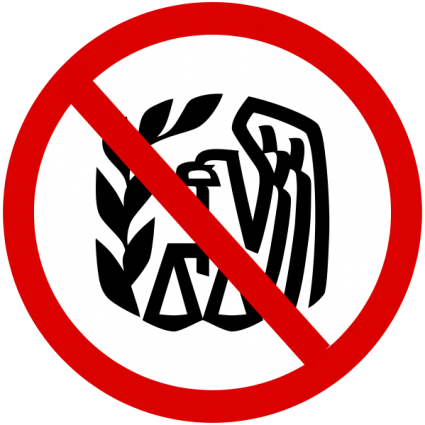
 The systematic destruction of the American way of life is happening all around us, and yet most people have no idea what is happening. Once upon a time in America, if you were responsible and hard working you could get a good paying job that could support a middle class lifestyle for an entire family even if you only had a high school education. Things weren’t perfect, but generally almost everyone in the entire country was able to take care of themselves without government assistance. We worked hard, we played hard, and our seemingly boundless prosperity was the envy of the entire planet. But over the past several decades things have completely changed. We consumed far more wealth than we produced, we shipped millions of good paying jobs overseas, we piled up the biggest mountain of debt in the history of the world, and we kept electing politicians that had absolutely no concern for the long-term future of this nation whatsoever. So now good jobs are in very short supply, we are drowning in an ocean of red ink, the middle class is rapidly shrinking and dependence on the government is at an all-time high. Even as we stand at the precipice of the next great economic crisis, we continue to make the same mistakes. In the end, all of us are going to pay a very great price for decades of incredibly foolish decisions. Of course a tremendous amount of damage has already been done. The numbers that I am about to share with you are staggering. The following are 19 signs that American families are being economically destroyed…
The systematic destruction of the American way of life is happening all around us, and yet most people have no idea what is happening. Once upon a time in America, if you were responsible and hard working you could get a good paying job that could support a middle class lifestyle for an entire family even if you only had a high school education. Things weren’t perfect, but generally almost everyone in the entire country was able to take care of themselves without government assistance. We worked hard, we played hard, and our seemingly boundless prosperity was the envy of the entire planet. But over the past several decades things have completely changed. We consumed far more wealth than we produced, we shipped millions of good paying jobs overseas, we piled up the biggest mountain of debt in the history of the world, and we kept electing politicians that had absolutely no concern for the long-term future of this nation whatsoever. So now good jobs are in very short supply, we are drowning in an ocean of red ink, the middle class is rapidly shrinking and dependence on the government is at an all-time high. Even as we stand at the precipice of the next great economic crisis, we continue to make the same mistakes. In the end, all of us are going to pay a very great price for decades of incredibly foolish decisions. Of course a tremendous amount of damage has already been done. The numbers that I am about to share with you are staggering. The following are 19 signs that American families are being economically destroyed…
